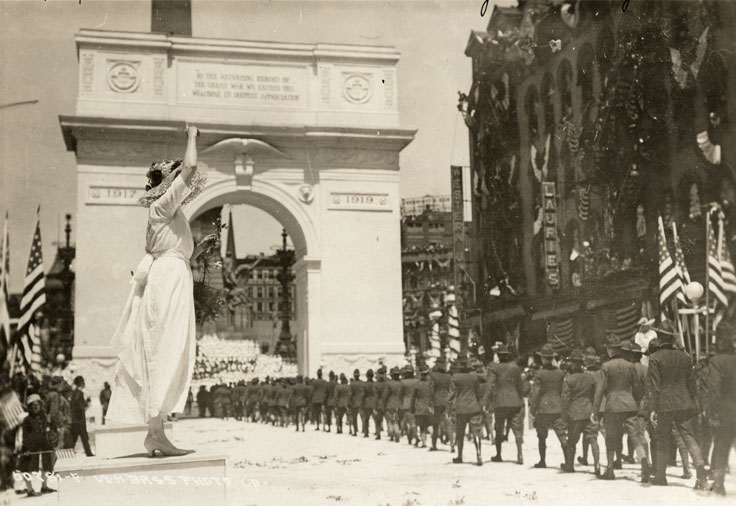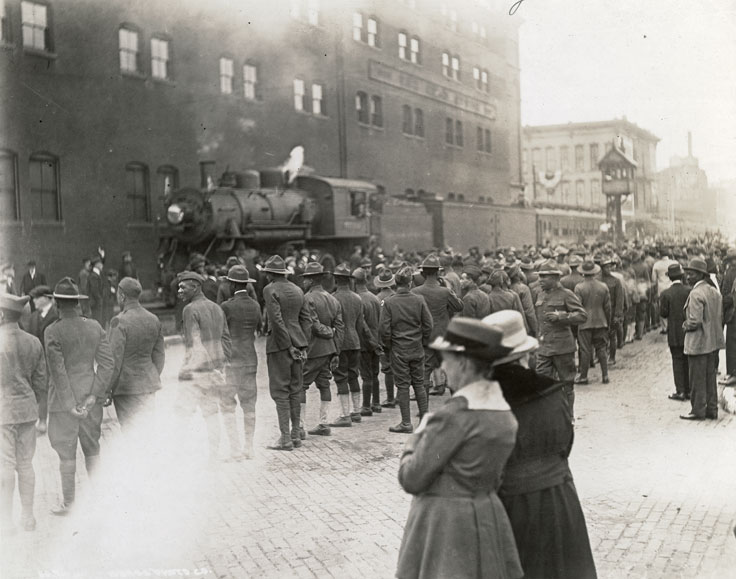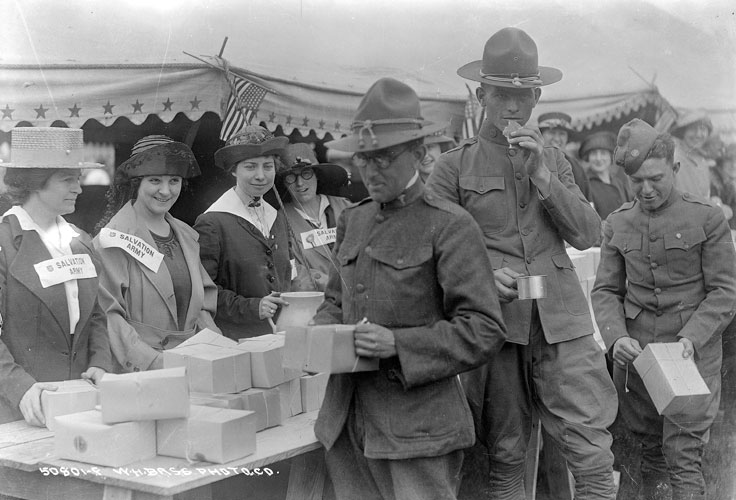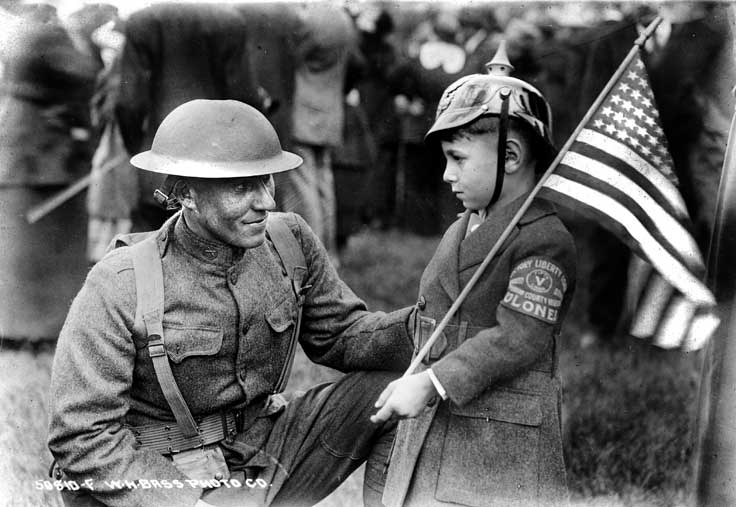
Purchase Tickets
Welcome Home Day – When It Was Really Over, Over There
May 7, 2019

May 7, 2019 marks a centennial some people may not observe.
Indianapolis hosted Welcome Home Day for returning WWI soldiers on this date in 1919. The day-long celebration included a huge parade, boxed lunches served by the Salvation Army and Eastern Star and many tearful reunions with family members. They had every reason to celebrate, and they did it on a grand scale. Just imagine large percentages of the population believing that the recent bloodshed had ended all wars. Imagine news of battles, deaths and atrocities traveling across continents and oceans at a record pace in record time.

A crowd of people, including African American soldiers, watch as a train transporting soldiers comes to a stop. Trains arrived throughout the day, bringing troops to participate in the Welcome Home Day Parade and festivities.
It had been a new kind of war with huge swaths of land in Europe laid waste and more than 65 million mobilized to fight. Aerial warfare was new and brutal, mustard gas floated in the air breathed by those in soggy trenches, machine guns could fire 600 bullets per minute, and howitzers nicknamed “Big Bertha” weighed 46 tons.
The world changed over four years of fighting. And even though the U.S. was only officially involved for a little under two years, Americans were weary and relieved to have it over, over there. It’s been estimated that more than 80,000 Americans went to Canada to enlist before we joined the war. Others went directly to Great Britain and France to enlist. Very small numbers in comparison joined the armies of Germany, Austria-Hungary and the Ottoman Empire. From 1914, the news filled papers and debates raged about whether we should join the fighting or supply weapons and needed materiel.

The women of the Salvation Army and Eastern Star prepared 20,000 boxed lunches to serve the returning soldiers. Each soldier also received a pint of coffee before the parade and after, totaling 1,000 gallons of coffee.
In greater numbers than ever before, women took over the work of men on the home front and traveled to help run hospitals for the sick and wounded. Life would never be the same for those who lost loved ones and for those who returned maimed or shell-shocked. What they clung to and boisterously celebrated on Welcome Home Day was that war was finished and the treaty to come out of Paris would prevent more wars to come. They were optimistic that the horror was behind them. Every generation hopes to leave the world a little better for its children.
A scant 21 years later there was more war in Europe. The rapid change brought by war isn’t smooth and never equitable. The Russian, Austria-Hungary and Ottoman Turk empires fell by the end of WWI. The Treaty of Versailles, written by the victors with the war still hot on their heels, was harshly punitive toward some, callously ignored the plight of small and powerless countries, and applied in ignorance as territories were divided and distributed among the “deserving.” None of this had any place in the massive celebration on May 7, 1919, though. The “boys” were home and there would be no more killing.
The images of that day made by photographers of the Wm. H. Bass Photo Company show excitement, happiness and optimism in abundance, showing that no matter how hard the fall, we must stand up, dust off and keep going with the hope of a better future.
Photo at the top – soldiers parade through the Victory Arch on Monument Circle










